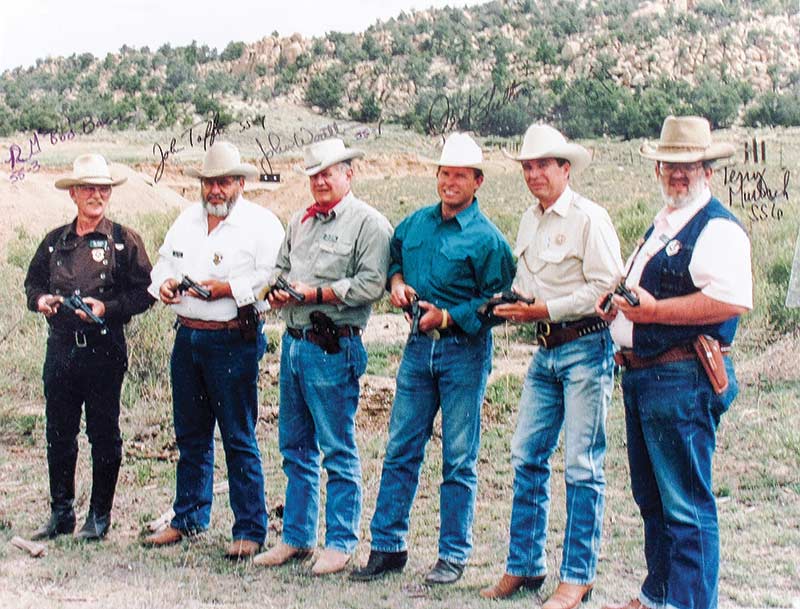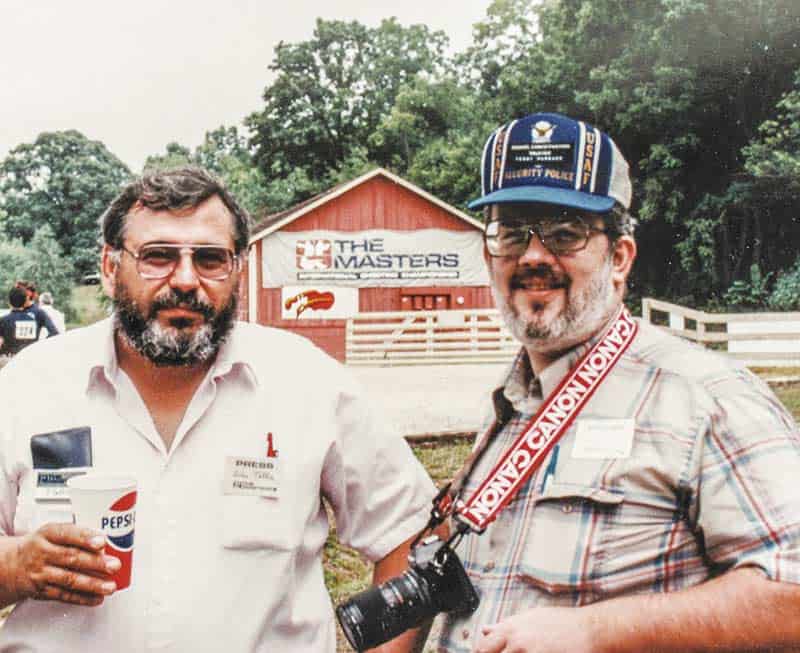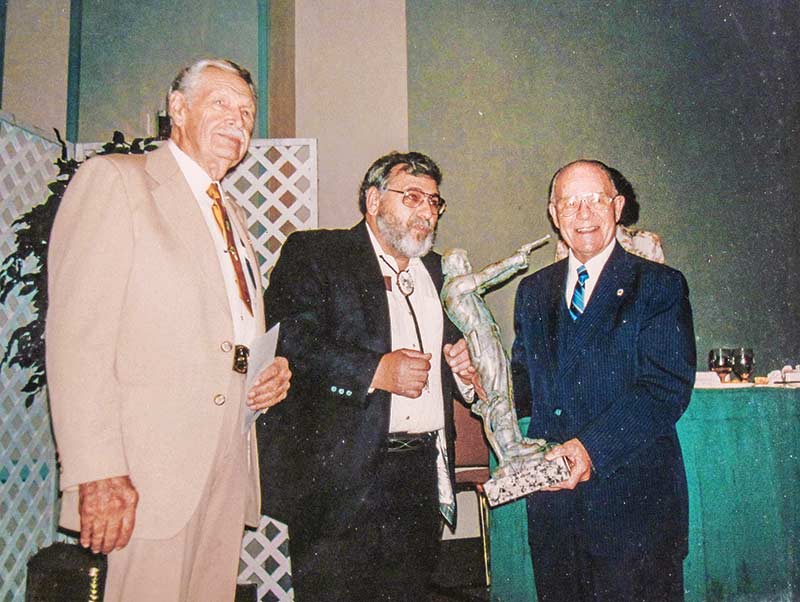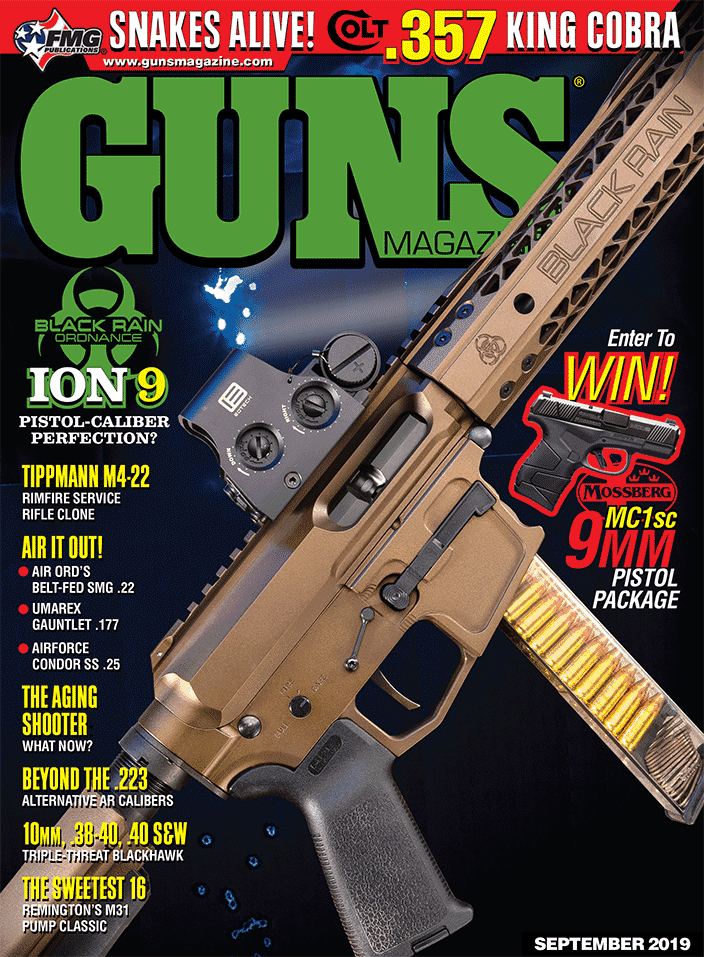Absent Friends
When a shooting buddy passes, it leaves a mighty big hole
Regular readers know I never repeat myself, however I sometimes, well, review things. I’ve often said the best part of my job is not all the guns, but rather all the friends I’ve made — friends who not only taught me much but were also great encouragers. I’ve corresponded with many of them regularly, and when the letters and phone calls stop it usually means they’ve been called Home.
Never in my wildest dreams could I have ever envisioned such men as Rex Applegate and Bill Jordan being friends. Both of them called me on a regular basis and I’ve missed those phone talks for a long time now.
Hal Swiggett was a very special friend and fellow Shootist; he helped me in many ways. John Lachuk was a great encourager. I always enjoyed visiting with John Wootters and we were definitely close kin when it came to sixguns. It has been more than 30 years ago since John saw my article on “L’il Guns” and he wrote me a long letter about his friendship with Skeeter Skelton and also how Skeeter’s Custom Ruger .44 Special came to be. The last time I talked to him by phone was just before he passed and we discussed small-bore rifles. Two giants in the industry, JD Jones and Wayne Baker have been close friends for four decades (I’m blessedly joyful they’re both still around). Wayne was just here this past week for a visit and we spent much time discussing important things like Faith, Family, Friends and Firearms.
A Fellow Critic Found
I just finished watching an episode of Gun Stories and as I listened to the expert I immediately thought, “I have to call Terry Murbach.” I first met Terry in 1988 at the first Masters Tournament in Barry, Illinois. I was eating lunch in the hotel dining room when this fellow walked up and introduced himself. We shared lunch together and were friends ever since. Terry was a voracious reader and he and I both shared a real appreciation of history. Today history is being rewritten both deliberately and through a flat-out lack of knowledge. Whenever I caught a mistake by any of the so-called experts on TV, I’d call Terry and we’d both decry the misinformation being disseminated.
In this particular episode on the Winchester Model 1873, I caught several mistakes and I wanted to call Terry immediately but now we’ll have to discuss it when I, too, cross over the river. In this particular segment it was stated as fact Oliver Winchester — after he saw the success of the 1860 Henry — bought the Henry Rifle Company and changed it to Winchester. Not even close to the truth!
In 1855 Oliver Winchester and his partner purchased the remaining assets of the Volcanic Arms Company. They changed it to the New Haven Arms Company and hired B. Tyler Henry as shop foreman. Henry designed the rifle bearing his name. There never was a “Henry Rifle Company” until the arrival of Henry Repeating Arms in the last quarter of the 20th Century. Winchester was not quite ready to put his name on such an endeavor. After the success of the 1860 Henry the company name was changed to Winchester and the 1866 lever gun was the first to bear the Winchester name.
I really regretted not being able to share a laugh with Terry over it!
Touching Base Over the Years
How many times have I heard it said Elmer Keith invented the .44 Magnum? Terry and I discussed this several times, along with the fact Elmer said he was as surprised as anyone was when he got the call from Smith & Wesson in December 1955 about his .44-caliber dream becoming reality!
I’ve also seen it in print Elmer Keith invented the .357 Magnum! Again, not true. Keith did do a lot of work with heavy loads in the .38 Special after Smith & Wesson came out with the .38/44 Heavy Duty six-gun. He designed a special bullet — Lyman’s #358429 — with a long nose to fill out the cylinder of the .38-44.
When Smith & Wesson brought out the .357 Magnum with the same length cylinder, it was found Keith’s bullet was too long to be properly crimped in the groove of the longer brass and fit the cylinder of the new magnum sixgun. So Keith continued to use his .38 Heavy loads in the new .357 Magnum. In fact, he reported the hits on long-range targets in Ed McGivern’s book (out to 600 yards) were accomplished with his .38 Heavy in a long-barreled .357 Magnum S&W. Terry, of course, knew this also.
Every two months Terry would call me to tell me he just received the latest issue of Handloader and tell me about all the good things in it (he always received his copy at least two weeks before I did). This past issue came to me very early and I couldn’t even call Terry and tell him I already had mine.
He also called me every time GUNS and American Handgunner showed up to tell me about all the good stuff in them. He read all three magazines cover to cover. Terry was also a great fan of college football and he would also call me and tell me about some of the teams which I had very little knowledge of except for Boise State. When Boise finally hit the big time and defeated some very worthy opponents in bowl games, I think he was even happier than I was (even if he lost a buck on our bet!).
This past bowl season, “his” team Ohio State won big and my first thought was to call Terry, but he’d passed just before Christmas and, unfortunately, long-distance phone calls don’t work when trying to call Heaven. I will continue to think of Terry often especially when I see or hear glaring errors. I always knew he would know exactly what I was talking about. Many of the history books in my library are there because Terry recommended them and now that is done.
Special Edition, Special Shootist
When the first Shootist Special Editions were issued Terry couldn’t afford to purchase one, which was unfortunate since he was directly responsible for the project. In the early 1990s Terry had contacted Tom Ruger to see about a special Ruger sixgun for the Shootists. I was sitting in Bill Ruger’s office when he got the phone call telling him about Tom’s fatal leukemia. After Tom died I told Terry to wait a while and then contact Bill directly and see if he wanted to carry on the project as a tribute to Tom. Terry did and Bill agreed and the result was the 4-5/8″ stainless steel .22 Bisley Model, specially marked in honor of Tom Ruger. Several Shootists came together and made sure Terry received one. It was presented to him as a gift from Deacon Deason after Deacon passed on in 1994. They’re probably discussing this right now.
The last time Terry was visiting me he had two very special Ruger .22s. One was a little Bearcat, which not only shot superbly accurately, its muzzle velocity registered much higher than you’d expect from such a short barrel. His other .22 — which he cherished a great deal — was his Bowen-customized Single-Six.
When Terry talked about this project he had planned to stay with the 6-1/2″ barrel and I told him he absolutely had to go with a 7-1/2″ barrel, which he did. He was never sorry and this particular Single-Six with its bright blue and case hardened colors is as beautiful as they come. I hope someone has it now who’ll appreciate it.
Terry old friend, my adopted little brother, I’ll see you down the line. Keep the bacon sizzling and the beans bubbling and don’t let the campfire die out.







